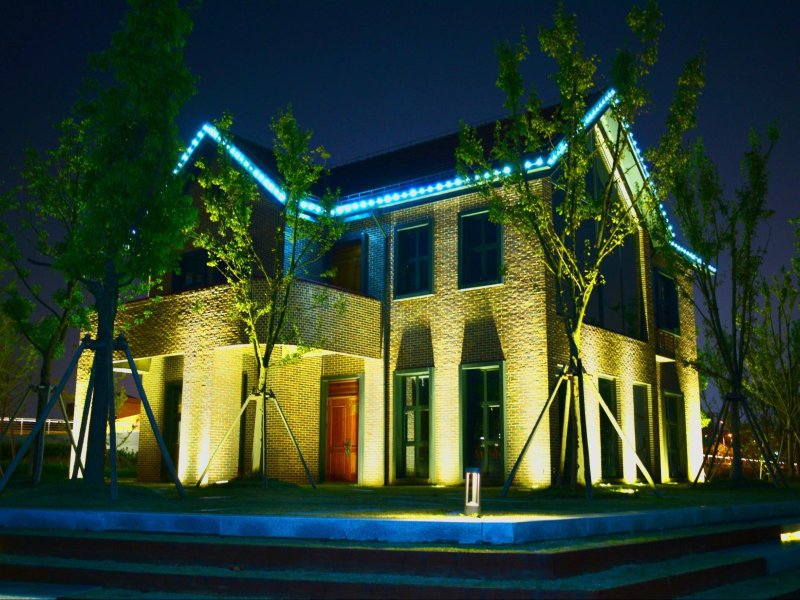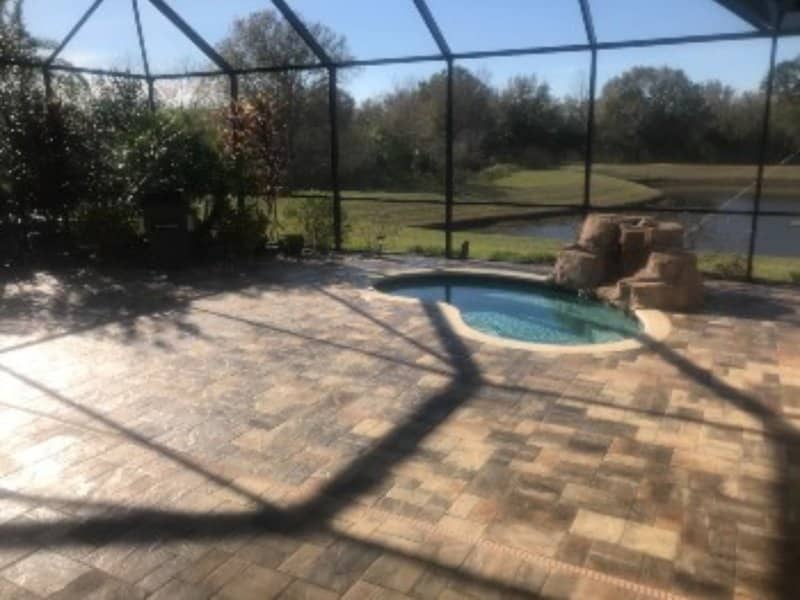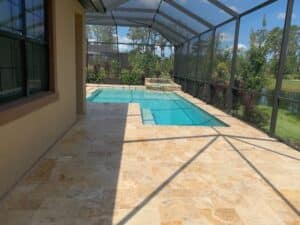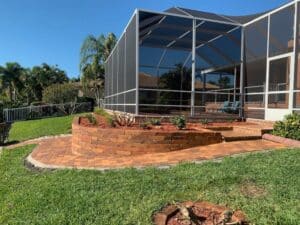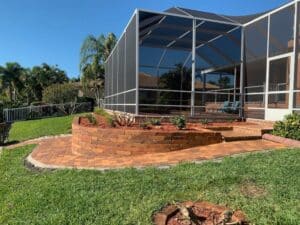Landscape lighting can transform your outdoor space, enhancing its beauty, functionality, and security. When deciding on a lighting solution, the two most common options are solar-powered and wired (electric) lighting systems. Each has its advantages and limitations, making it essential to consider factors such as cost, installation, maintenance, performance, and personal preferences before choosing the right option for your needs.
Our friends at Xcellent Xteriors help us delve into the pros and cons of solar and wired landscape lighting to help you make an informed decision.
Solar Landscape Lighting
How It Works
Solar lights harness energy from the sun via photovoltaic cells. This energy is stored in rechargeable batteries and used to power LED lights after sunset. Solar lighting is typically standalone and doesn’t require any electrical wiring.
Benefits of Solar Lighting
1. Ease of Installation
Solar lights are incredibly easy to install. Since they don’t require electrical wiring, you can set them up in minutes without needing professional help. This makes them ideal for DIY enthusiasts or quick projects.
2. Energy Efficiency
By using renewable solar energy, these lights eliminate electricity costs. Over time, this can lead to significant savings on your utility bills.
3. Eco-Friendly
Solar lighting is a sustainable option, reducing your carbon footprint and contributing to a greener planet.
4. Portability
Since solar lights are not tethered to a power source, they can be moved easily, making them versatile for changing landscape designs or seasonal decorations.
5. Cost-Effective
The upfront cost of solar lights is typically lower than wired systems, especially when you factor in the elimination of installation and wiring costs.
Limitations of Solar Lighting
1. Dependence on Sunlight
Solar lights require ample sunlight to charge fully. Shaded areas or locations with limited sun exposure can result in dimmer lighting or shorter operating times.
2. Lower Brightness
Solar lights often produce less brightness compared to wired systems, making them less suitable for large or heavily trafficked areas that require strong illumination.
3. Weather Sensitivity
Cloudy days and harsh weather conditions can affect the performance and lifespan of solar lights, as their batteries and solar panels are exposed to the elements.
4. Battery Replacement
Rechargeable batteries in solar lights degrade over time and may need replacement every 1-3 years, adding to long-term maintenance costs.
Wired Landscape Lighting
How It Works
Wired lighting systems are connected to your home’s electrical grid, usually via a low-voltage transformer. This setup provides consistent power to light fixtures installed throughout your landscape.
Benefits of Wired Lighting
1. Reliable Performance
Wired systems offer consistent lighting regardless of weather conditions or time of year. You’ll never have to worry about dim or non-functioning lights due to insufficient sunlight.
2. Higher Brightness
Electric landscape lighting provides powerful illumination, making it ideal for large areas, security lighting, or highlighting key features such as trees, fountains, or pathways.
3. Customization and Control
With wired systems, you can integrate advanced features such as timers, dimmers, and smart home compatibility. These options allow you to customize your lighting for convenience and aesthetic appeal.
4. Durability
Wired fixtures are generally more robust and longer-lasting than their solar counterparts, especially when installed correctly by professionals.
Limitations of Wired Lighting
1. Complex Installation
Installing wired lighting requires digging trenches, running cables, and connecting to your home’s power supply. This process is labor-intensive and often requires professional assistance, increasing the upfront cost.
2. Higher Initial Cost
Wired systems are typically more expensive to purchase and install compared to solar lights, especially if you hire an electrician.
3. Energy Costs
Since wired lighting relies on electricity, it can add to your utility bills. However, using energy-efficient bulbs such as LEDs can help mitigate these costs.
4. Limited Mobility
Once installed, wired lights are fixed in place, making it challenging to adapt or move them if you redesign your landscape.
Key Factors to Consider
When choosing between solar and wired landscape lighting, consider the following factors:
1. Location
- Solar lighting is best for areas with ample sunlight, while wired lighting is suitable for shaded or high-use areas requiring reliable performance.
2. Purpose
- For decorative or ambient lighting, solar lights may suffice. For security or task lighting, wired systems provide the necessary brightness and dependability.
3. Budget
- If you’re working within a tight budget, solar lights offer a cost-effective solution. However, for long-term durability and advanced features, investing in a wired system may be worthwhile.
4. Maintenance
- Solar lights require periodic battery replacements, while wired systems demand occasional maintenance for transformers and wiring.
5. Aesthetic Goals
- Wired systems offer greater flexibility in design and placement, allowing you to achieve a polished, professional look. Solar lights are more suitable for casual, low-maintenance setups.
6. Environmental Impact
- Solar lighting is the clear choice for those prioritizing eco-friendliness, as it relies entirely on renewable energy.
Hybrid Approach
For many homeowners, a hybrid approach combining both solar and wired lighting offers the best of both worlds. Use solar lights for decorative purposes in sunny areas and wired lights for critical zones that require consistent illumination. This strategy allows you to balance cost, performance, and sustainability effectively.
Conclusion
Choosing between solar and wired landscape lighting depends on your specific needs, budget, and environmental conditions. Solar lighting is ideal for ease of installation, eco-friendliness, and affordability, while wired systems excel in reliability, brightness, and customization. Assess your outdoor space and priorities carefully to make an informed decision. By selecting the right lighting solution, you can enhance your landscape’s beauty and functionality for years to come.

